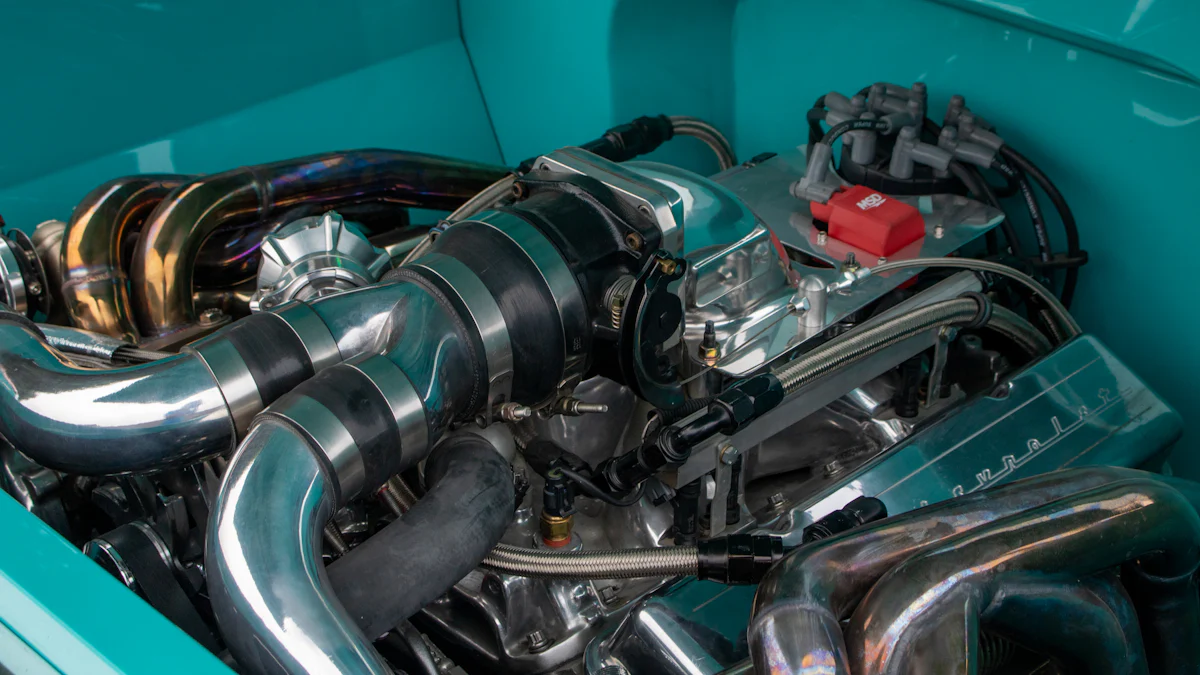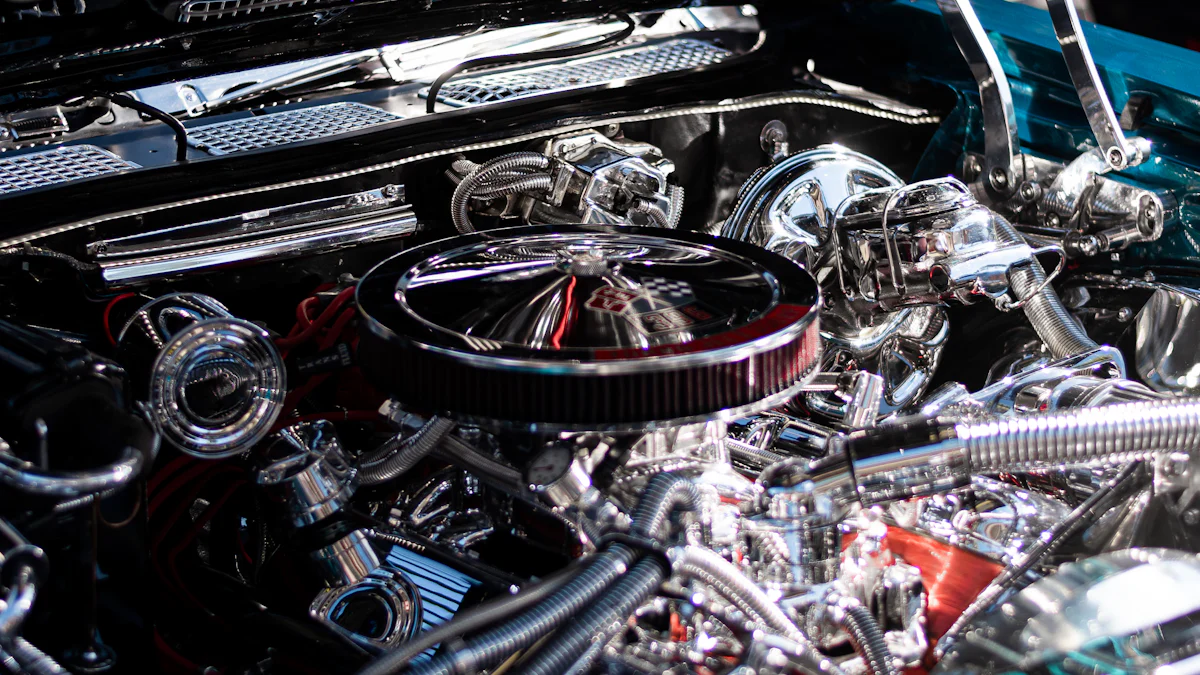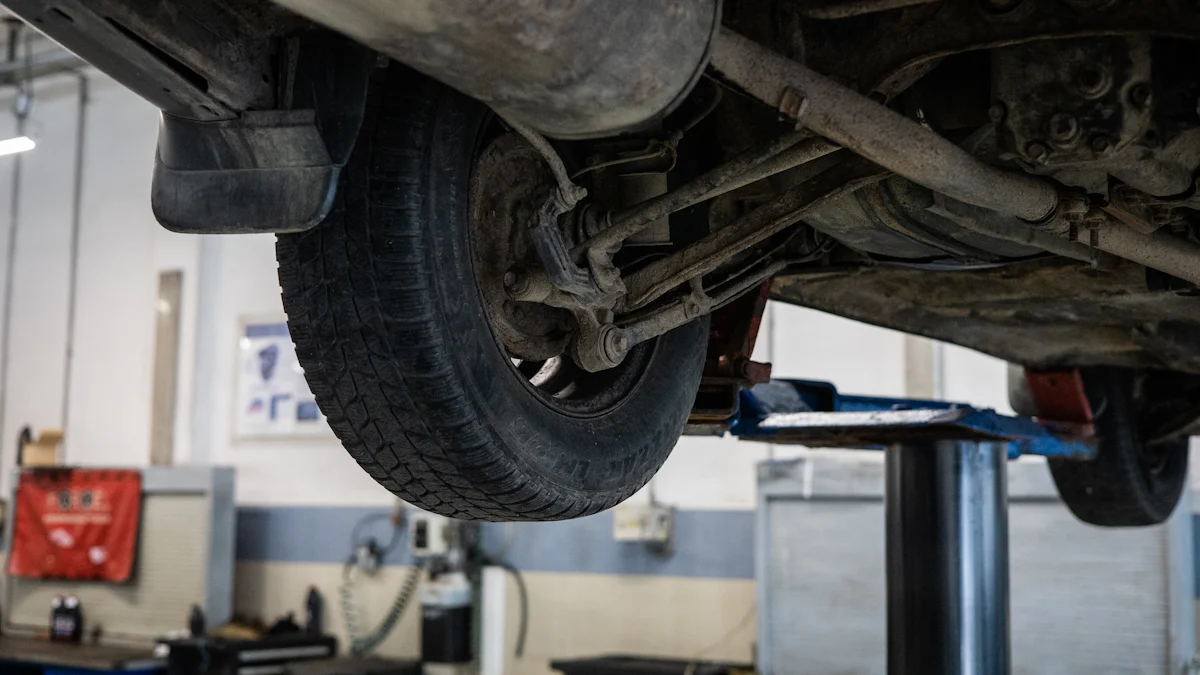Effective Tips for EGR Tube Maintenance

Maintaining your EGR tube is crucial for optimal vehicle performance and effective emissions control. Regular upkeep not only enhances engine efficiency but also saves you money by preventing costly repairs. You might wonder how to identify issues or maintain the EGR tube effectively. Understanding these aspects empowers you to keep your vehicle running smoothly and environmentally friendly. By addressing these concerns, you ensure a longer lifespan for your car and contribute to a cleaner environment.
Understanding the EGR Tube
What is an EGR Tube?
The EGR tube, or Exhaust Gas Recirculation tube, plays a vital role in your vehicle’s engine. It helps recirculate a portion of the exhaust gases back into the engine cylinders. This process reduces the nitrogen oxide emissions, which are harmful pollutants. By doing so, the EGR tube contributes significantly to lowering the environmental impact of your vehicle.
Function in the vehicle
In your vehicle, the EGR tube connects the exhaust manifold to the intake manifold. It allows a controlled amount of exhaust gases to re-enter the combustion chamber. This action helps lower the combustion temperature, which reduces the formation of nitrogen oxides. The EGR tube ensures that your vehicle runs efficiently and meets emission standards.
Importance in emissions reduction
Reducing emissions is crucial for environmental protection. The EGR tube helps achieve this by decreasing the amount of nitrogen oxides released into the atmosphere. These gases contribute to air pollution and smog. By maintaining a functional EGR tube, you help keep the air cleaner and comply with emission regulations.
Why Does the EGR Tube Get Clogged?
Over time, the EGR tube can become clogged with carbon deposits. These deposits form as a result of the combustion process. When the EGR tube clogs, it can no longer effectively recirculate exhaust gases. This situation can lead to various performance issues in your vehicle.
Common causes of clogging
Several factors contribute to the clogging of the EGR tube. One common cause is the buildup of carbon deposits from incomplete combustion. Poor fuel quality can also accelerate this buildup. Additionally, infrequent maintenance can allow these deposits to accumulate over time, leading to blockages.
Impact of a clogged EGR tube on vehicle performance
A clogged EGR tube can negatively affect your vehicle’s performance. You might notice a decrease in engine efficiency and power. The engine may run rough or stall, and the check engine light might activate. These symptoms indicate that the EGR tube needs attention. Addressing these issues promptly can restore your vehicle’s performance and prevent further damage.
Signs Your EGR Tube Needs Maintenance

Common Symptoms
Recognizing the signs that your EGR tube requires maintenance can save you from bigger issues down the road. Here are some common symptoms to watch for:
Decreased engine performance
You might notice your vehicle struggling to perform as it used to. The engine may feel sluggish, and acceleration could be less responsive. This decrease in performance often indicates that the EGR tube is not functioning properly. Addressing this issue promptly can restore your vehicle’s efficiency.
Check engine light activation
The check engine light serves as an early warning system for various engine problems, including EGR tube issues. If this light activates, it’s crucial to investigate further. Ignoring it could lead to more severe engine problems. A diagnostic check can help pinpoint if the EGR tube is the culprit.
Diagnostic Tips
Proper diagnosis of EGR tube issues is essential for effective maintenance. Here’s how you can inspect the EGR tube and the tools you’ll need:
How to inspect the EGR tube
Begin by locating the EGR tube in your vehicle. Once found, visually inspect it for any visible signs of wear or damage, such as cracks or leaks. Pay attention to any unusual noises or smells coming from the engine area, as these can also indicate EGR tube problems. Regular inspection helps catch issues early, preventing costly repairs.
Tools needed for diagnosis
To effectively diagnose EGR tube issues, you’ll need a few basic tools. A flashlight will help you see into tight spaces. A mirror can assist in viewing hard-to-see areas. Additionally, a diagnostic scanner can read error codes from your vehicle’s computer, providing valuable information about potential EGR tube problems. Having these tools on hand makes the diagnostic process smoother and more accurate.
Effective Maintenance and Cleaning Techniques

Maintaining your EGR tube is essential for keeping your vehicle in top condition. Regular cleaning prevents carbon buildup and ensures optimal performance. Here’s a guide to help you clean the EGR tube effectively.
Step-by-Step Cleaning Guide
Required tools and materials
To clean the EGR tube, gather the following tools and materials:
- A dedicated EGR cleaning solution
- A soft bristle brush or pipe cleaner
- Safety gloves and glasses
- A small container for soaking
- A flashlight for better visibility
Having these items ready will make the cleaning process smoother and more efficient.
Detailed cleaning process
- Safety First: Wear safety gloves and glasses to protect yourself from chemicals and debris.
- Locate the EGR Tube: Use a flashlight to find the EGR tube in your vehicle. Ensure the engine is off and cool before proceeding.
- Inspect the Tube: Check for visible signs of wear or damage. Look for cracks or weak spots that might need attention.
- Soak the Tube: Place the EGR tube in a small container filled with the cleaning solution. Allow it to soak for 15-20 minutes to loosen stubborn carbon deposits.
- Scrub the Tube: Use a soft bristle brush or pipe cleaner to scrub away the carbon buildup. Be gentle to avoid damaging the tube.
- Rinse and Dry: Rinse the EGR tube with clean water to remove any remaining cleaning solution. Allow it to dry completely before reinstalling it in your vehicle.
Following these steps will help maintain the EGR tube’s functionality and extend its lifespan.
Preventive Measures
Preventive maintenance can save you time and money in the long run. Here are some tips to keep your EGR tube in good condition.
Regular inspection schedule
Set a regular inspection schedule for your EGR tube. Check it every 18 to 24 months as part of your vehicle maintenance routine. Regular inspections help catch potential issues early, preventing costly repairs.
Tips for preventing future clogs
- Use high-quality fuel to minimize carbon buildup.
- Avoid short trips that prevent the engine from reaching optimal temperature.
- Consider using fuel additives designed to reduce carbon deposits.
By following these preventive measures, you can ensure your EGR tube remains clean and functional, contributing to better vehicle performance and reduced emissions.
Regular EGR tube maintenance offers numerous benefits. You enhance your vehicle’s performance and reduce harmful emissions. By following the maintenance tips provided, you can prevent costly repairs and ensure your car runs efficiently. A well-maintained EGR tube contributes to a longer vehicle lifespan and better fuel economy. Implement these practices to enjoy a smoother driving experience and contribute to a cleaner environment. Your proactive approach to maintenance not only saves money but also supports sustainable driving.
Post time: Oct-24-2025